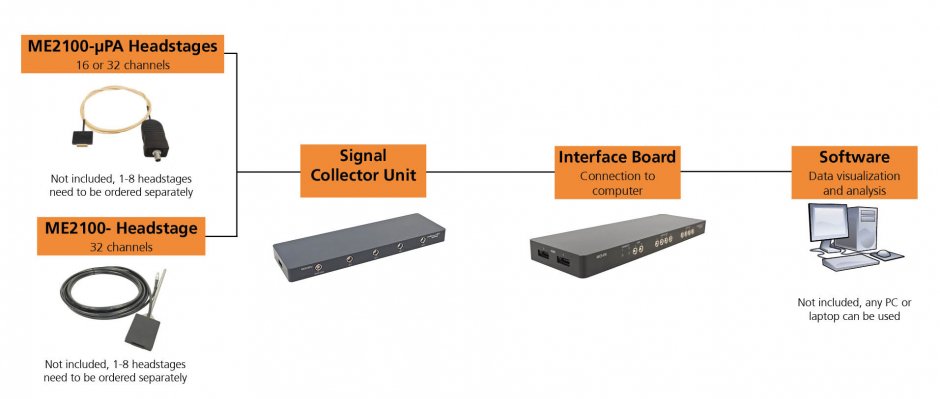The ME2100-System consists of an interface board (IFB), a signal collector unit (SCU) and the headstage amplifiers.
The interface board transfers the data to the computer via USB 3.0 and can be used for a variety of applications. The same interface board, that you now get for your ME2100-System, can also be used e.g. for a Wireless-System. All you have to do is add receiver and wireless headstages, and you have complete Wireless-System. You can also use the same interface board for in vitro applications, by adding a MEA2100, Multiwell or CMOS headstage.
The signal collector unit gathers all data from the headstages and transfers them to the interface board. You can connect up to 4 headstages to each SCU, while 2 SCUs can be connected to one IFB. The signal collector unit can also control up to four optical stimulation units including high power LED.
The headstage amplifier is the connection to the probe. It amplifies 32 channels right at the signal source and digitizes the data at a 24bit resolution with 50 kHz sampling rate per channel, minimizing noise and thus optimizing the signal-to-noise ratio. Apart from amplifier and A/D converter, the headstages also include a 2-channel stimulus generator. The headstage is attached to a rod mount, so you can easily fix it to a micromanipulator.

